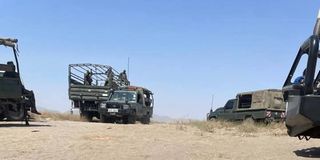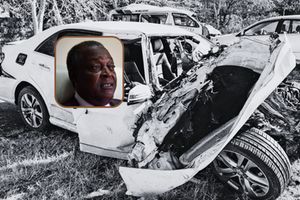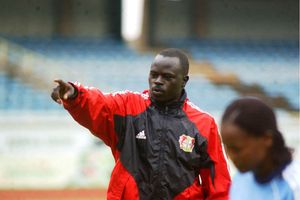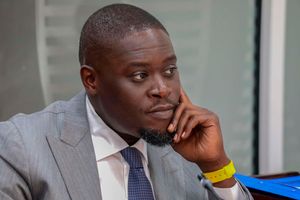Premium
Turkana attack: Pain for families as 38 people still missing

Security patrols on the shores of Lake Turkana after an unknown number of fishermen were killed in deadly attacks along the Kenya-Ethiopia border on February 22, 2025.
Only three bodies have so far been recovered from Lake Turkana following the deadly attack by suspected Dassenech militia from neighbouring Ethiopia on Kenyan pastoralists, fishermen and traders on February 22, 2025 at Lotiira and Lopeimukat border villages.
Rift Valley Regional Commissioner Dr Abdi Hassan said 66 survivors had so far been found, and 38 Kenyans still missing.
The Ethiopian authorities have also stated that 13 of their nationals are still missing following the February 22 attack.
Dr Hassan told the Nation in his office that all efforts were being made to trace the missing Kenyans in the area.
"Nine boats and 140 fishing nets have been recovered so far in the operation in the region," he told journalists on Friday.
Dr Hassan said the Ethiopian government was actively involved in the joint search operation along the Kenya-Ethiopia border.
The government is strengthening security in the region to deal with conflict between the Turkana and the Oromo community members.
The challenge in the search and recovery missions, Dr Hassan said, has been the rough terrain and poor communications and road network.
The bodies have been buried in a mass grave.
Affected families had this week reported at the Kenya Red Cross desk that more than 40 people, 47 boats, 556 fishing nets and gears, one motorcycle and one firearm belonging to a national police reservist were unaccounted for since the attacks.
"Three bodies have so far been recovered. The search and rescue operation is ongoing," said Turkana North Deputy County Commissioner George Orina.
The first two bodies were recovered after four days while the third body was retrieved from the lake after eight days.
This was after the Kenya Red Cross stepped up their search and rescue operation with a newly acquired fiberglass boat and two professional divers on Sunday.
Kenya Red Cross Turkana County Coordinator Rukia Abubakar said that they were still on the ground and are yet to find more bodies or survivors.
"With support from security authorities from both Kenya and Ethiopia, Kenya Coast Guard and Kenya Maritime Authority officials, we are actively retrieving abandoned boats and nets from the lake. So far we have retrieved nine boats and 120 nets," Ms Rukia said.
The humanitarian organisation that is currently operating from Todonyang is also supporting affected families with mental health and psychosocial support services to deal with the loss of loved ones and destruction of their sources of livelihood, as well as to reunite families.
Ethiopian authorities reported that before the retaliatory attack, their fishermen had lost their boats.
Political leaders, including Turkana North MP Ekwom Nabuin, Turkana Women Representative Cecilia Ngitit, Former Petroleum Cabinet Secretary John Munyes and former Turkana County Assembly Speaker Christopher Nakuleu, have since left the area after actively being involved in coordinating the search and rescue mission. The leaders also put the government to task over the incident.
"Together with the County Security Committee team led by County Commissioner Julius Kavita, we have also distributed relief food to residents," Mr Nabuin said.
Turkana Governor Jeremiah Lomorukai also convened a meeting with the county cabinet to discuss how to support the affected families.
Authorities are prioritising provision of food supplies, fishing equipment, and medical assistance.
There are also plans renovate roads along the border to improve accessibility and facilitate relief and rescue efforts.





